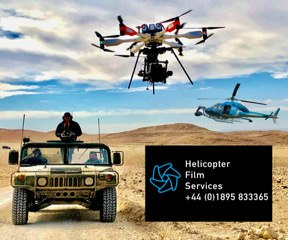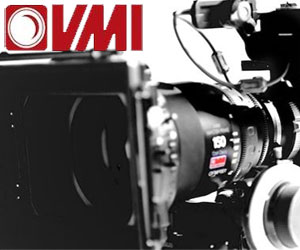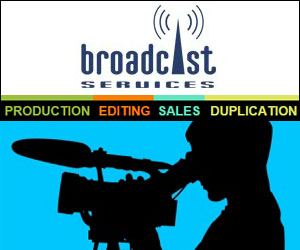Broadcast News
15/12/2015
The IP Infrastructure Evolution Within The Media Sector

Is it a risk or an opportunity for traditional broadcast system integration companies?
The Broadcast sector is converging rapidly with IT and Telecommunications technologies as user demand for traditional distribution methods of delivering video are changing toward multi-channel, multi-platform, on-demand delivery via the internet, writes Chris Phillips, Support Services Consultant for TSL Systems.
Utilisation of IP based infrastructure provides more efficient services which provide relatively low cost interactive content delivery capability over a vast array of devices running a variety of viewing applications. As transport network capacity bandwidth increases, so does the desire to fill it, which has led to increased channel volume, feature capability and an improved end user experience. This change in delivery has presented commercial challenges for traditional terrestrial, satellite & cable methods of delivering video services, as an ever growing on-demand IP capability provide users with more power, flexibility and choice than ever before. Internet content providers such as BT, Netflix, iPlayer Services and many other subscriber and 'pay as you go' IP distributed content providers are now well established in the market and as a result traditional large high value box based specialist product integration is becoming less and less required.
Technology Manufacturers are adapting to the need to reduce costs, be more competitive and yet deliver technology that provides high quality audio and video. Many manufacturers are now moving away from bespoke expensive to manufacture hardware based products towards applications based software solutions running on standard 'Off the Shelf' IT hardware. This change brings major advantages to infrastructure costs and also flexibility in the management, transport, manipulation and storage of content, however this also brings with it complexity in integration of software within a multi-vendor domain and with it even more complex issues relating to content security and maintenance.
As a result traditional broadcast system integration companies also have to change their model to meet the new requirements IP technology has brought to a rapidly evolving market space. System Integration needs to adopt IT principles to enable it to manage and develop the infrastructure it provides to its customers. In future this business will require an increased knowledge of IP/IT based network infrastructure, application software and higher levels of training associated with supporting the network infrastructure and application software provided.
A structured methodology and framework in which to deliver services that keep systems current and enable them to meet the ever changing demands of the sector is crucial to ensure system availability and capacity is maintained. IT and Telecommunication Integration companies are starting to encroach on traditional broadcast projects as their knowledge of IP solutions and distribution services become more important to the infrastructure deployed within broadcast. However there is still a large white space for traditional broadcast system integration companies to fill and thrive in the new evolved market, but not in their current form.
Broadcast Integration companies have a limited time to move forward, as there is a real risk they will find themselves left behind. There is a need to develop internal skills to build and support IP infrastructure within digital media environments. They will need to leverage their expertise in the sector to bring value to the customer ensuring they differentiate themselves from the basic IT integration companies. Specialised broadcast IP solutions organisations will thrive in this market as organisations look to outsource technology and vendor management to focus on core capabilities.
This change was very evident in the 1990's within traditional IT Data markets; increasingly the TV and Video sector now looks likely to follow a similar path. Bringing together IT expertise, software integration knowledge, vendor relationships and project management skills within media content creation and management projects, will enable video service providers to look to outsource technology management to partners of choice that have this expertise. To enable this to become a reality, traditional system integrators will need to move away from rack and stack system methodology, to become specialist video technology solution providers. This requires specialists to bring value to customers by establishing the best technology and commercial methods of building a mix of on-site and offsite solutions to ensure competitive advantages can be obtained, utilising the best fit technology available.
This means for onsite solutions that hardware lifecycle management, software support and maintenance are crucial for ensuring systems remain current. Management of compatibility between deployed system software and hardware will be crucial, to ensure new versions of application software can be applied with minimal risk to operations. System life is being extended as traditional bespoke hardware solutions are being replaced with application software operating on standard IT infrastructure. This enables larger organisations to evolve and extend the life of modern IP systems through upgrades and refresh programs as opposed to traditional method of completely replacing entire platforms. For smaller enterprises the idea of Software as a Service (SaaS) and managed IT infrastructure become more appealing as modern technology facilitates new cost effective, cloud based methodology of providing feature rich solutions previously viewed as being too expensive to purchase, manage and implement in house.
TSL Systems have worked with CJP BSS Ltd to apply ITIL v.3 2011 framework methodology to broadcast service solutions providing organisations with the ability to change from traditional 'box based rack and stack' system providers, into organisations that can add real value and services to their customers.
The companies believe that by implementing a sound service framework methodology at the forefront of your offering, not only provides a solid platform on which to build differentiating customer value but also is a fundamental requirement to be able to support the technology infrastructure deployed in today’s broadcast and media markets.
Article by Chris Philips, CJP BSS Ltd – Consultant with TSL Systems.
www.tsl.co.uk
This article is also available to read at BFV online.
The Broadcast sector is converging rapidly with IT and Telecommunications technologies as user demand for traditional distribution methods of delivering video are changing toward multi-channel, multi-platform, on-demand delivery via the internet, writes Chris Phillips, Support Services Consultant for TSL Systems.
Utilisation of IP based infrastructure provides more efficient services which provide relatively low cost interactive content delivery capability over a vast array of devices running a variety of viewing applications. As transport network capacity bandwidth increases, so does the desire to fill it, which has led to increased channel volume, feature capability and an improved end user experience. This change in delivery has presented commercial challenges for traditional terrestrial, satellite & cable methods of delivering video services, as an ever growing on-demand IP capability provide users with more power, flexibility and choice than ever before. Internet content providers such as BT, Netflix, iPlayer Services and many other subscriber and 'pay as you go' IP distributed content providers are now well established in the market and as a result traditional large high value box based specialist product integration is becoming less and less required.
Technology Manufacturers are adapting to the need to reduce costs, be more competitive and yet deliver technology that provides high quality audio and video. Many manufacturers are now moving away from bespoke expensive to manufacture hardware based products towards applications based software solutions running on standard 'Off the Shelf' IT hardware. This change brings major advantages to infrastructure costs and also flexibility in the management, transport, manipulation and storage of content, however this also brings with it complexity in integration of software within a multi-vendor domain and with it even more complex issues relating to content security and maintenance.
As a result traditional broadcast system integration companies also have to change their model to meet the new requirements IP technology has brought to a rapidly evolving market space. System Integration needs to adopt IT principles to enable it to manage and develop the infrastructure it provides to its customers. In future this business will require an increased knowledge of IP/IT based network infrastructure, application software and higher levels of training associated with supporting the network infrastructure and application software provided.
A structured methodology and framework in which to deliver services that keep systems current and enable them to meet the ever changing demands of the sector is crucial to ensure system availability and capacity is maintained. IT and Telecommunication Integration companies are starting to encroach on traditional broadcast projects as their knowledge of IP solutions and distribution services become more important to the infrastructure deployed within broadcast. However there is still a large white space for traditional broadcast system integration companies to fill and thrive in the new evolved market, but not in their current form.
Broadcast Integration companies have a limited time to move forward, as there is a real risk they will find themselves left behind. There is a need to develop internal skills to build and support IP infrastructure within digital media environments. They will need to leverage their expertise in the sector to bring value to the customer ensuring they differentiate themselves from the basic IT integration companies. Specialised broadcast IP solutions organisations will thrive in this market as organisations look to outsource technology and vendor management to focus on core capabilities.
This change was very evident in the 1990's within traditional IT Data markets; increasingly the TV and Video sector now looks likely to follow a similar path. Bringing together IT expertise, software integration knowledge, vendor relationships and project management skills within media content creation and management projects, will enable video service providers to look to outsource technology management to partners of choice that have this expertise. To enable this to become a reality, traditional system integrators will need to move away from rack and stack system methodology, to become specialist video technology solution providers. This requires specialists to bring value to customers by establishing the best technology and commercial methods of building a mix of on-site and offsite solutions to ensure competitive advantages can be obtained, utilising the best fit technology available.
This means for onsite solutions that hardware lifecycle management, software support and maintenance are crucial for ensuring systems remain current. Management of compatibility between deployed system software and hardware will be crucial, to ensure new versions of application software can be applied with minimal risk to operations. System life is being extended as traditional bespoke hardware solutions are being replaced with application software operating on standard IT infrastructure. This enables larger organisations to evolve and extend the life of modern IP systems through upgrades and refresh programs as opposed to traditional method of completely replacing entire platforms. For smaller enterprises the idea of Software as a Service (SaaS) and managed IT infrastructure become more appealing as modern technology facilitates new cost effective, cloud based methodology of providing feature rich solutions previously viewed as being too expensive to purchase, manage and implement in house.
TSL Systems have worked with CJP BSS Ltd to apply ITIL v.3 2011 framework methodology to broadcast service solutions providing organisations with the ability to change from traditional 'box based rack and stack' system providers, into organisations that can add real value and services to their customers.
The companies believe that by implementing a sound service framework methodology at the forefront of your offering, not only provides a solid platform on which to build differentiating customer value but also is a fundamental requirement to be able to support the technology infrastructure deployed in today’s broadcast and media markets.
Article by Chris Philips, CJP BSS Ltd – Consultant with TSL Systems.
www.tsl.co.uk
This article is also available to read at BFV online.
More Systems Integration Stories
13/03/2018
BFV's Big Interview: Danmon Group
This month, Broadcast Film & Video discusses System Integration, the future of broadcasting, and technical development with Christoffer Kay, Chief Ope
BFV's Big Interview: Danmon Group
This month, Broadcast Film & Video discusses System Integration, the future of broadcasting, and technical development with Christoffer Kay, Chief Ope
08/02/2018
Systems Integration: Successes, Challenges And What's Next
The broadcast industry is in a strange position where a slight reticence remains around new technologies' suitability for live operation. This means t
Systems Integration: Successes, Challenges And What's Next
The broadcast industry is in a strange position where a slight reticence remains around new technologies' suitability for live operation. This means t
08/03/2017
AKA Design Welcome The Rise Of Flexible Working
Sit-stand desks are said to be beneficial towards a person's health, mood and productivity, according to research, so it's no surprise that AKA Design
AKA Design Welcome The Rise Of Flexible Working
Sit-stand desks are said to be beneficial towards a person's health, mood and productivity, according to research, so it's no surprise that AKA Design
15/12/2016
Timeline Television Completes Design & Build Of BT Sport's Home
We were delighted to have been selected by BT Sport to lead on the transformation of part of the former International Broadcast Centre at the Queen El
Timeline Television Completes Design & Build Of BT Sport's Home
We were delighted to have been selected by BT Sport to lead on the transformation of part of the former International Broadcast Centre at the Queen El
15/12/2016
System Design Should Include Service Design
The term 'tech support' can conjure up some not-so-flattering images of sun-shy geeks speaking their own kind of binary language… but when a system cr
System Design Should Include Service Design
The term 'tech support' can conjure up some not-so-flattering images of sun-shy geeks speaking their own kind of binary language… but when a system cr
09/12/2016
SIs Pour Their Hearts Into Software & IP Tech
Vendors don't want to fight with their SI partners: George Jarrett plays it again with SAM and talks to ATG Danmon and TSL Systems about the technical
SIs Pour Their Hearts Into Software & IP Tech
Vendors don't want to fight with their SI partners: George Jarrett plays it again with SAM and talks to ATG Danmon and TSL Systems about the technical
20/07/2016
Altered Images Completes Coventry University Project
Coventry University is a forward-looking, modern university with a proud tradition as a provider of high quality education and a focus on applied rese
Altered Images Completes Coventry University Project
Coventry University is a forward-looking, modern university with a proud tradition as a provider of high quality education and a focus on applied rese
20/06/2016
System Integrator Looks To The Future
The transition to 4K and IP architecture implies more sophistication, and for systems integrators such as dB Broadcast, more intelligent systems mean
System Integrator Looks To The Future
The transition to 4K and IP architecture implies more sophistication, and for systems integrators such as dB Broadcast, more intelligent systems mean
11/03/2016
IP Infrastructure Is Ready For The Challenge
In this second of two articles, Tom Swan, Sales and Marketing Director of dB Broadcast, explains how the system integrator keeps abreast of all the ch
IP Infrastructure Is Ready For The Challenge
In this second of two articles, Tom Swan, Sales and Marketing Director of dB Broadcast, explains how the system integrator keeps abreast of all the ch
16/02/2016
IP Infrastructure Is Ready For The Challenge
In this latest article, Tom Swan of system integrator dB Broadcast considers the extent to which IP / IT infrastructure is ready for all the challenge
IP Infrastructure Is Ready For The Challenge
In this latest article, Tom Swan of system integrator dB Broadcast considers the extent to which IP / IT infrastructure is ready for all the challenge















